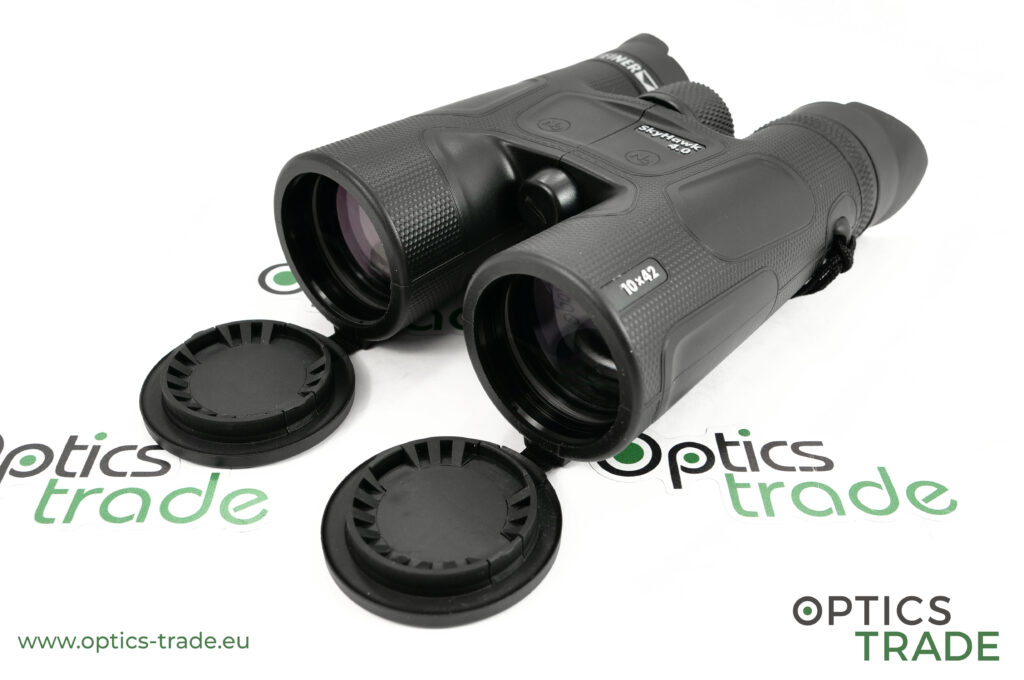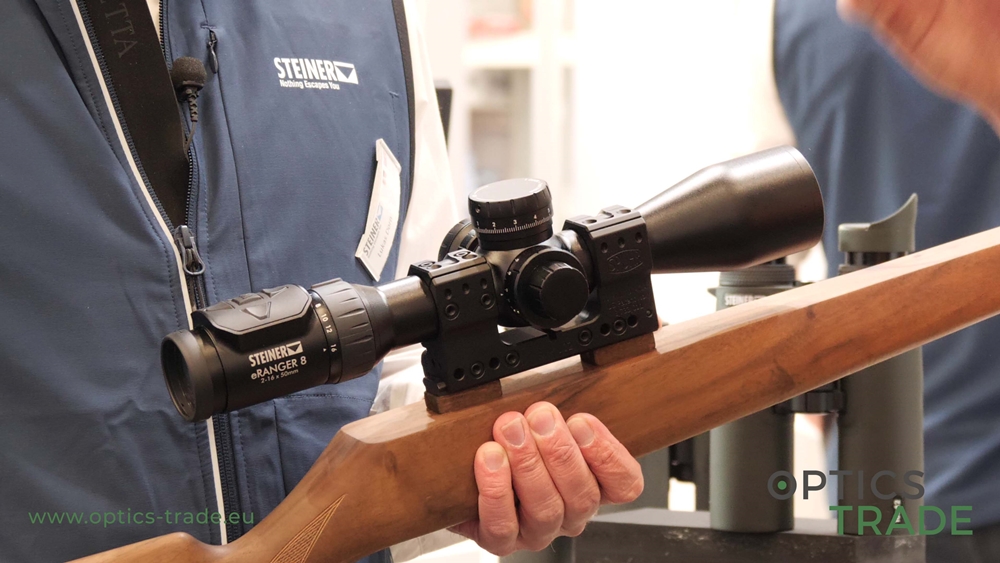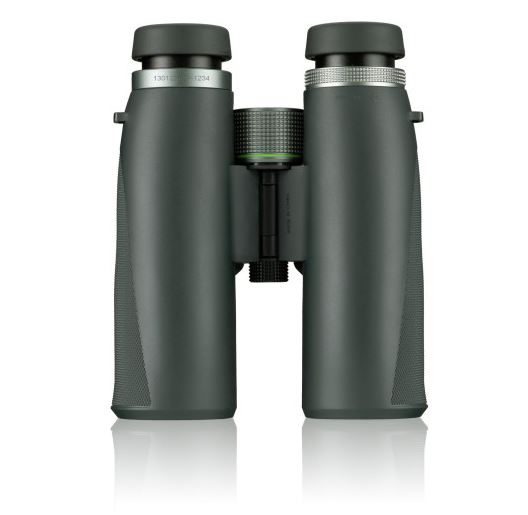Introduction
Binoculars are fine optical instruments that are designed to help curious people enjoy the outside world to a greater extent. A pair of binoculars allows us to obtain a closer view of interesting objects that are distant and, therefore, impossible to see with just the naked eye. As binoculars are becoming less expensive and more efficient at the same time, more people are able to enjoy using them for various activities, such as bird-watching, hunting, stargazing and plane–spotting.
Binoculars comprise a pair of monocular telescopes in parallel, and are used to view far-away objects with both eyes. Since using both eyes for viewing gives a larger depth of field making them more comfortable, binoculars have gained significant popularity over conventional telescopes. Although binoculars serve only one purpose, that is, to let an observer see details from a distance, one type of binocular cannot suffice for multiple adventurous activities. A hunter who is after a deer in the woods will need something different from a person who likes to spot aircraft around airport runways or a star-gazer.
Just like everything else, only high-quality binoculars are capable of providing the right viewing experience to the observer, but they are not always budget-friendly. While a pair of cheap knock-offs might sound like a great idea, it is possible that those binoculars will not only hinder the user from viewing an object clearly, but may also affect their eye-sight after continuous usage. Ophthalmologists recommend purchasing only those binoculars which were designed and manufactured keeping both the optics and ergonomic considerations in mind, which a number of optics manufacturers offer nowadays in their premium line of products.
Several myths are making rounds on the internet which claim that binoculars, in general, are harmful for eyes to the plight of many potential buyers. The first binoculars were manufactured in the 17th century using a combined pair of small hand-held telescopes, and since then, a number of scientists have contributed their research and development studies to the enhancement of binocular efficiency and reliability. The outcomes of their studies have contended the idea of eye damage caused by normal binocular use. There are, however, certain rules that need to be followed in order to avoid any permanent damage to the eye-sight.

Precautionary measures when using binoculars
Just like all pieces of equipment, binoculars come with a set of standard operating procedures (SOPs) which, when followed, will provide the required viewing experience to the end-user, without compromising on comfort.
Never look directly at the Sun or other bright objects
We all get a text in the middle of the night every now and then, and switch on our phone’s display to see whom it is from. Even if the phone is at the lowest brightness mode, it is extremely difficult to look at the contents of the screen for more than five consecutive seconds. Similarly, nobody can gaze at the Sun for too long. Our eyes immediately feel a burning sensation, causing us to blink repeatedly and look elsewhere to avoid uneasiness. Sun is the ultimate source of ultraviolet radiation which can damage the sensitive optical receptors in our eyes in a matter of seconds, if no protective gear is used.
There is a fun science experiment that makes use of a magnifying glass or lens to burn something, such as paper or grass, under direct sunlight. This is possible because a magnifying or convex glass has the ability to converge light onto a single spot, known as the focus point. The concentration of light rays at the focus tends to heat up the surface beneath it. Likewise, binoculars also comprise a pair of convex lenses in each barrel to bring distant objects closer to the eyes. While a typical magnifying glass has a 2x-3x optical zoom, however, personal binoculars come with zooming capabilities of up to 12x power, and if looked through directly at the sun, intense sunlight would converge on the cornea, instantly developing black spots on the surface of eye lens, thereby, permanently harming the vision in one or both eyes. This type of eye damage is irreversible. This precaution also holds true for bright objects other than sun, such as, stadium lights, fog lights, explosions, etc.

Choosing the right binoculars
The working principle behind binoculars is similar to that of eyeglasses, but in a more sophisticated way. Anyone who wears a pair of wrong prescription eyeglasses for a long period of time, they will experience some discomfort and worsen their eyesight easily; same is the case with binoculars. Since they are a long-term investment item and you will not be buying a new one for at least a decade, therefore, it makes sense to do some brainstorming beforehand about the type of objects and environment the binoculars would be used in during its lifetime, and then choosing a pair carefully.
Deciding between several available magnifications is the first step. Most avid birdwatchers choose between 8x, 10x and 12x zoom binoculars, but a large magnification is not always better, since it also features a narrower field of view and some obvious handshake during observation, often requiring a tripod stand.
Varying atmospheric conditions can cause vapor contamination on the inside surfaces of binocular eyepieces and objective lenses, which can put unwanted strain on eyes of the observer due to lack of focus. Almost every modern binocular boasts fog-proofing and glare-reduction, and it is an excellent idea to opt these instead of the conventional ones.
The worst decision beginners can make when selecting a pair of binoculars is looking for the cheapest ones on the shelf, as they all appear to be essentially the same. The problem arises when these “knock-off” models show dull and washed-out colors in low-light conditions, and sometimes have a slight tint or image distortion, resulting in eye discomfort if used for a long time. Therefore, it is wise to invest in a branded set of binoculars that is void of these problems and comes with a definite warranty period, in case repairs are needed in the unforeseen future.
Incorrect usage and Binocular calibration
Binoculars have gained popularity among frequent and occasional observers alike, but most people are unfamiliar with the calibration mechanism of binoculars. Due to unfamiliarity, a large population does not understand the method to adjust our devices properly for near and far- sightedness. Almost everybody has eyes with a visual acuity difference nowadays and it is quite common to see better with one eye than the other. Using a binocular without adjusting it first for each eye individually is one of the reasons behind eye-fatigue and “tired-eyes”. This is because most watchers just turn the flywheel until their objects are focused in their dominant eye, effectively disregarding to adjust the barrel for the other eye. While this may be a temporary nuisance, using non-calibrated optical devices in the long-term run can have a detrimental effect on vision.
All of this boils down to this: the importance of adjusting the binoculars for each eye separately. For correct calibration, high-quality binoculars possess a diopter adjustment knob on either the left or right ocular which allows the user to focus individual barrels one-by-one for either eye. This feature is called diopter adjustment and is commonly featured in high-end binoculars.
Binocular Misalignment Issues
The word binocular translates to “two or dual” and “vision”, and in essence, it is indeed a pair of telescopes (barrels) mounted parallel to each other on a frame, while supplying images to individual eyes. The two images are combined inside the brain into one crisp image. To make sure this happens, the two barrels must be exactly parallel and properly aligned to each other.
Binoculars are prone to mishandling and being dropped due to their frequent use in unpredictable places. In the event of a fall, the alignment between the barrels can be easily affected. When binocular barrels are misaligned, it subsequently disrupts the combination of images from both eyepieces, causing eye strain and headaches, as the two images will try to fight with each other. It is advised by opticians to immediately stop the use of binoculars with apparent alignment issues. Misaligned binoculars cannot be fixed by DIY methods and will need to be sent to the manufacturer for realignment and other repairs.
Cheap binoculars are more susceptible to get knocked out of alignment due to their inferior materials and manufacturing methods, whereas, binoculars from a well-known manufacturer will be able to withstand routine shocks better.
Conclusion
Eyes are, unquestionably, one of the most important and delicate organs of our body, and even a minor damage to them can change the way we go about in our daily lives. One of the things which can be done to protect them from harm is to understand the effects that faulty binoculars and other optical devices can have on our eyesight.
The answer to the interesting question: “Can binoculars damage your eyes?” is complicated. If SOPs and precautionary measures for usage are followed religiously by the owner, using binoculars will be an amazing experience. After all, they are built to chase our dreams. If we opt out of following the rules set by the manufacturer, our eyes will have to pay the price of our negligence.
Regardless of the make, magnification and type, using a pair of binoculars to look directly at the sun or other bright objects can instantly injure the minuscule light receptors located inside the cornea of our eyes, effectively disabling us from using our eyes in the future.





Thank you for your information.